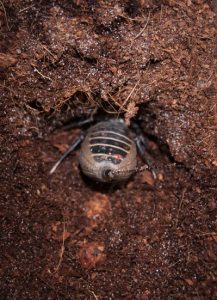What is a Vinegarroon?
Vinegarroon are commonly known as whip scorpions. However, their formal name is Thelyphonida. Vinegaroons are arachnids.
Fact: Arachnida is a class of joint-legged invertebrate animals. Arachnida includes orders containing spiders, scorpions, ticks, mites, harvestmen, and solifuges.
The name “whip scorpion” refers to their resemblance to common scorpions and possession of a whiplike tail, and “vinegaroon” refers to their ability when attacked to discharge an offensive, vinegar-smelling liquid, which contains acetic acid.
Vinegaroons range from 25 to 85 mm in length and are a sandy black colour, with a hard outer shell.
New research on vinegaroons reveals that what was once thought to be a single species living in North America is seven distinct species, of which three are new to science.
During the day, vinegarroons remain out of sight in burrows they dig with their pedipalps. They can often be found under logs, boards, rotting wood, rocks, and other natural dark places.

The history of Vinegarroons.
More than 120 known species of vinegaroons are found mainly in the tropics, especially in Southeast Asia.
One of the largest species of vinegaroon, Mastigoproctus giganteus, lives comfortably in the desert and semi-arid tracts of the southern U.S. and Mexico. However, you will find this vinegarroon tends to only be active during the wetter months of the year.
The giant North American vinegaroon, “Mastigoproctus giganteus”, was first described in 1835 and has been known to live across many habitats in Florida, Texas, Arizona, and central and northern Mexico.
Diego Barrales-Alcalá studied specimens from museum collections across the United States and Mexico. Diego collected new samples to conduct a comprehensive study of the vinegaroons.
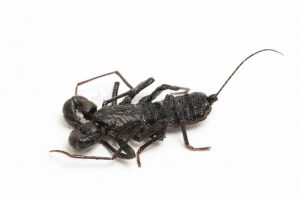
Buying a Vinegarroon
Blue cross, pets4home and many other charities offer you to adopt Vinegarroons that need a new home.
Blue Cross says: “We help find the perfect pet for you by matching the pet to suit you and your family’s lifestyle, ensuring that whatever animal you adopt it is the right one for you.”
Private seller
On the other hand, websites such as gumtree allow people to post private listings of their Vinegarroons. However, make sure you look carefully as sometimes the owners’ are not looking out for what is best for the Vinegarroon.
Big shops
If you are looking for something with more guarantee. Pets at home sell Vinegarroons. They can also provide you with more information. You can also pick up everything you need for your Vinegarroons (cage, bedding, food) when you are there.
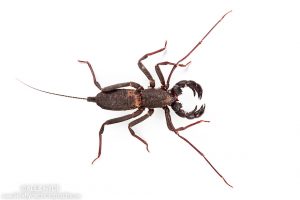
Is a Vinegarroon a good pet?
The first pro of a pet vinegarroon is that they are praised for their pest-control skills.
Secondly, they are harmless to people. If you aggravate a vinegaroon it gives off a mist of acetic acid — vinegar (so all that will happen is you are a bit smelly).
The last pro of having a vinegarroon as a pet is that they are interesting to feed, and you can watch the exciting moment as they hunt for creatures.
However, a vinegarroon is not a pet that you can cuddle or train. Vinegaroons prefer to spend their time burrowed away in the dark soil. Many people who have pet vinegaroon’s also said they look slightly scary…
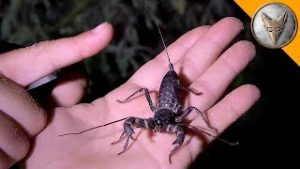
Housing your Vinegarroon .
You can house your vinagarroon in a 5-gallon tank (either glass or plastic). Choosing a clear one means you can observe them when they come out of hiding!
Vinagarroons are desert animals meaning they need a warmer environment. Make sure to keep them away from drafts. As well as, keeping the tank at a temperature between 24°C and 27°C.
at the pet store or online supplier. A heat mat that is designed for seed trays controlled by a thermostat can be purchased at a hydroponic supply. They are made to be water resistant and are very durable. They can also be a good heat source.
Vinegaroons can be kept as pets, but they’re not considered domesticated animals. They prefer an environment that replicates the wild and will want places to climb and hide.
Provide items for climbing and hiding. Large dry, pesticide free leaves work well to provide hiding spots as well as cork bark tubes and flats. Cork materials are easily found in the pet trade. You can find rocks, bark and leaves outdoors Make sure they’re free of any pest, pesticides or fertilizer before putting them in your pet’s cage.
Provide a sponge and water for moisture. Vinegaroons do better with humidity. It’s not necessary to strictly monitor humidity like you do with temperature, but keep a damp, natural sponge or just a shallow dish of water in the cage. In most cases, this will provide the moisture necessary for your pet to thrive. They do drink water and can sometimes be observed going to the water dish to drink. A small area of the habit can have water in the soil also to provide humidity. Take care not to put to much water on or in the soil.

Diet of a Vinegarroon.
Vinegaroons are carnivorous creatures. In the wild they will have caught the pray and hude them in there pre dug burrows. Vinegarroons would then have blinded its pray so it couldn’t run away. Finally becoming the meal for the day.
You should feed your vinegarroon insects, millipedes and scorpions. They also eat worms, slugs, cockroaches and crickets.
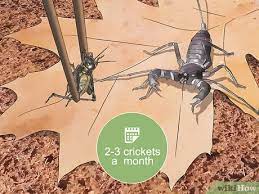
Lifespan
If you correctly look after your vinegarroon, they should live up to 6 years. However, it is not easy to tell naturally how long they would live as predators usually kill them.
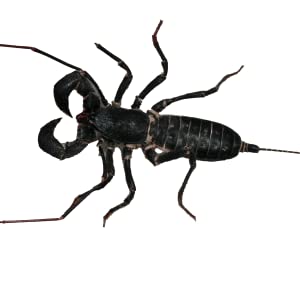
Pregnancy
Like all other animals, vinegaroons go through a courtship ritual. The male will go around searching for a suitable female to mate with; once it locates this right female, the male moves slowly closer to the female timing to hold the tip of its front leg. The female will not give in so quickly because it also wants to see the seriousness of the male who wants to be its mate. This game will continue until such a time when the male can hold the tip of the front leg of the female.
The male then deposits a spermatophore, which is a united mass of sperm, on the ground. The female then picks the spermatophore from the ground using its genitals. The male then helps to push the spermatophore inside the female’s genitals using its pedipalps. The sperms will then fertilize the eggs inside the female’s body.
After a few months, the female buries herself inside a big burrow. She then extrudes about 40 eggs that are inside a membrane brood sac. This brood sac maintains moisture, and it remains attached to the female’s genitals. The female holds her genitals in an upward position so that the brood sac does not touch the ground. While in this position, the female cannot eat. She remains in this position for the next few months until the eggs develop and hatch into young vinegaroons.
The young vinegaroon is attached to the mum’s back by a particular fluid. They stay in this position until they are old enough to look for their food. The female mother is usually very exhausted, and after this period, she lives for only two years and then dies. The male does not care for the young ones. After it pushes the sperms inside the female’s genitals using its pedipalps, it leaves the rest of the work to the female.
